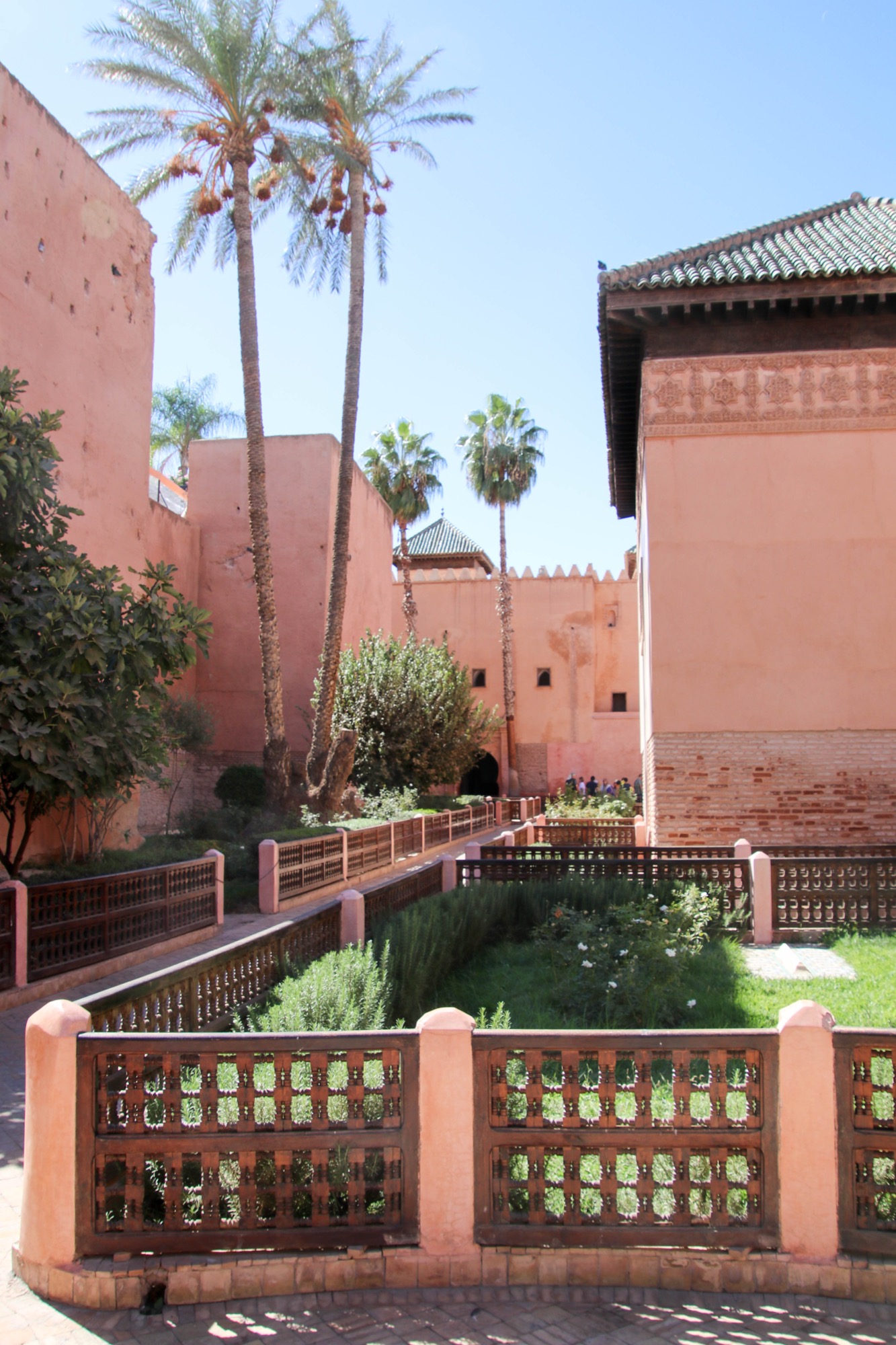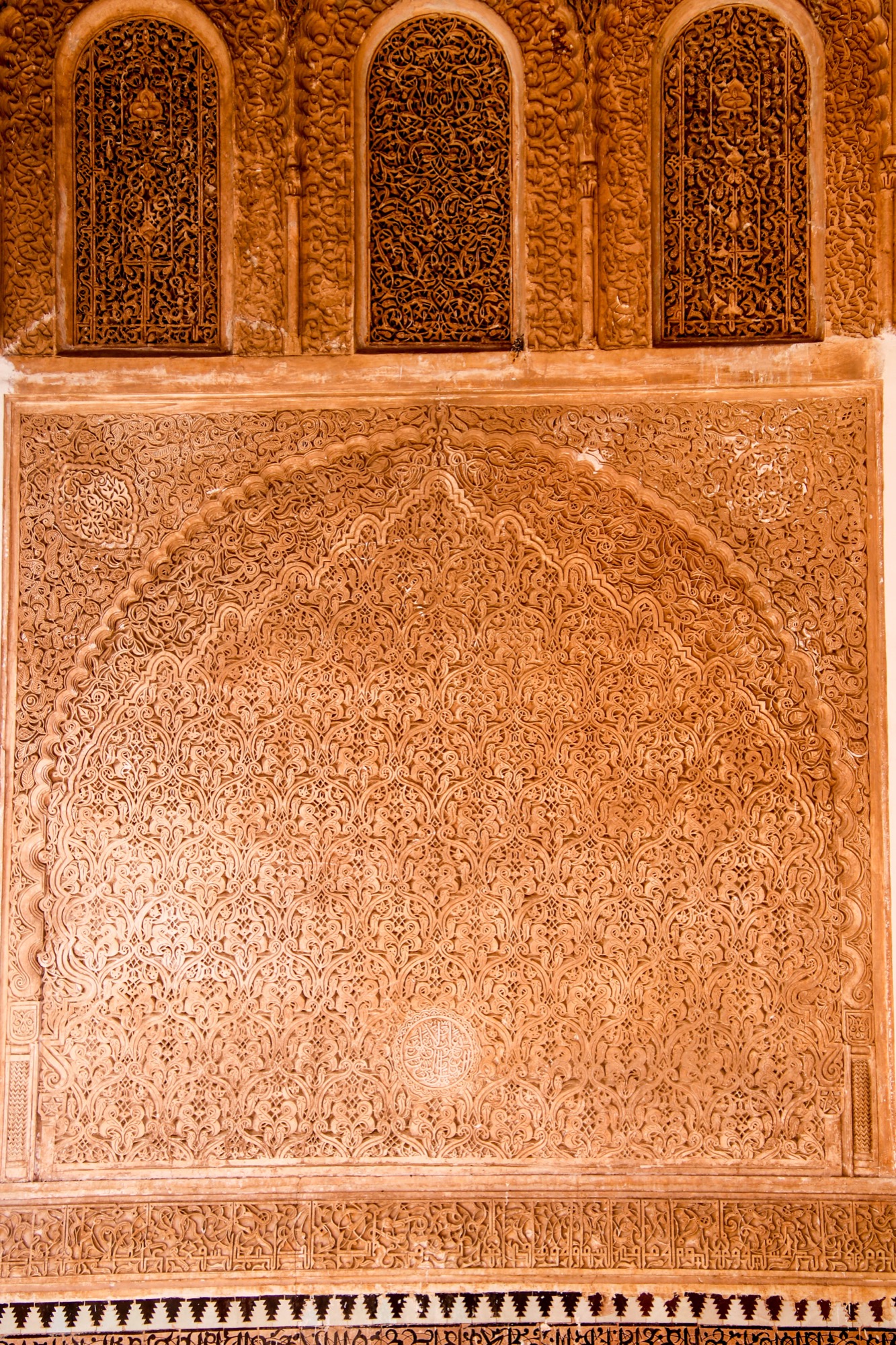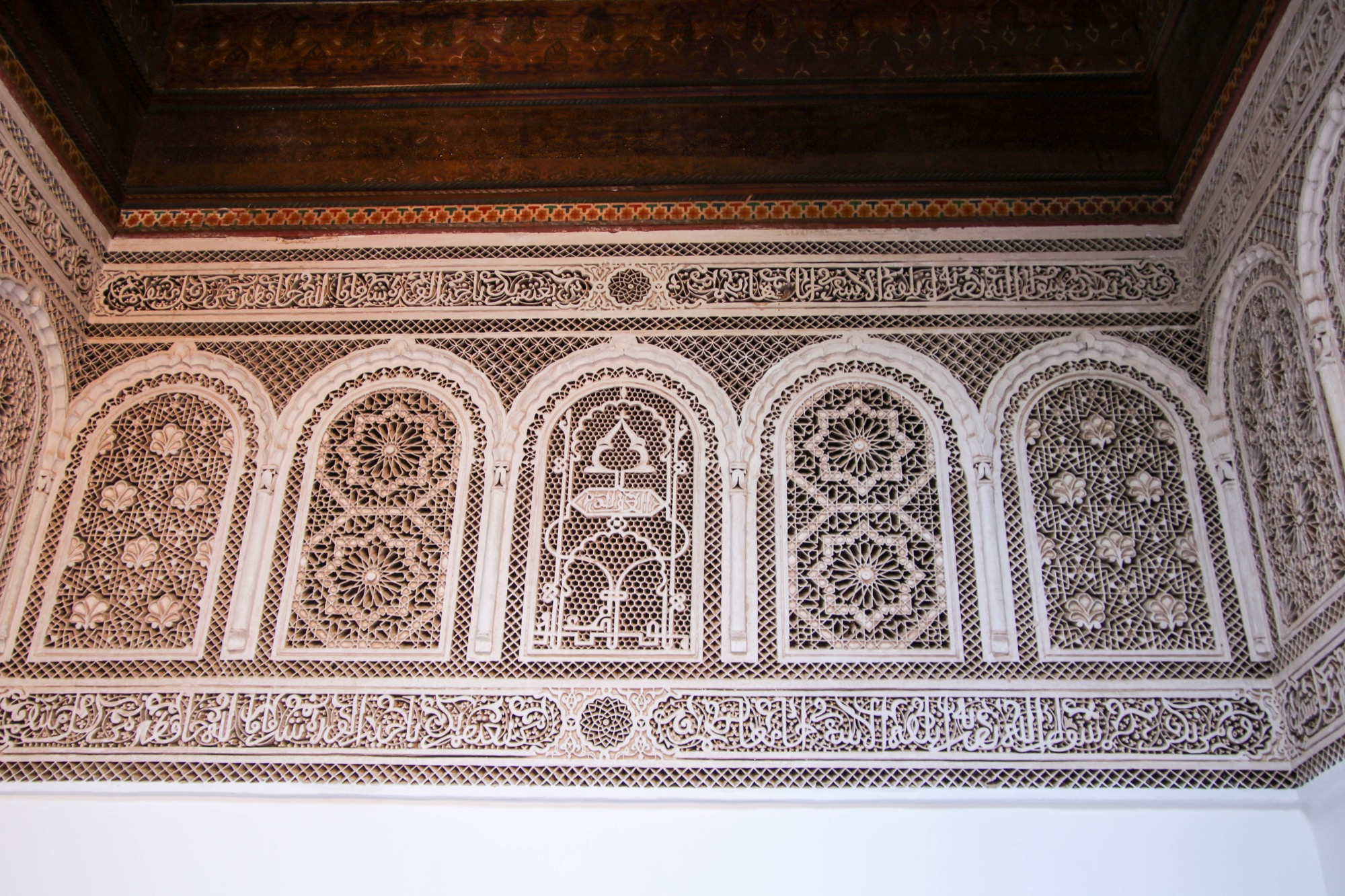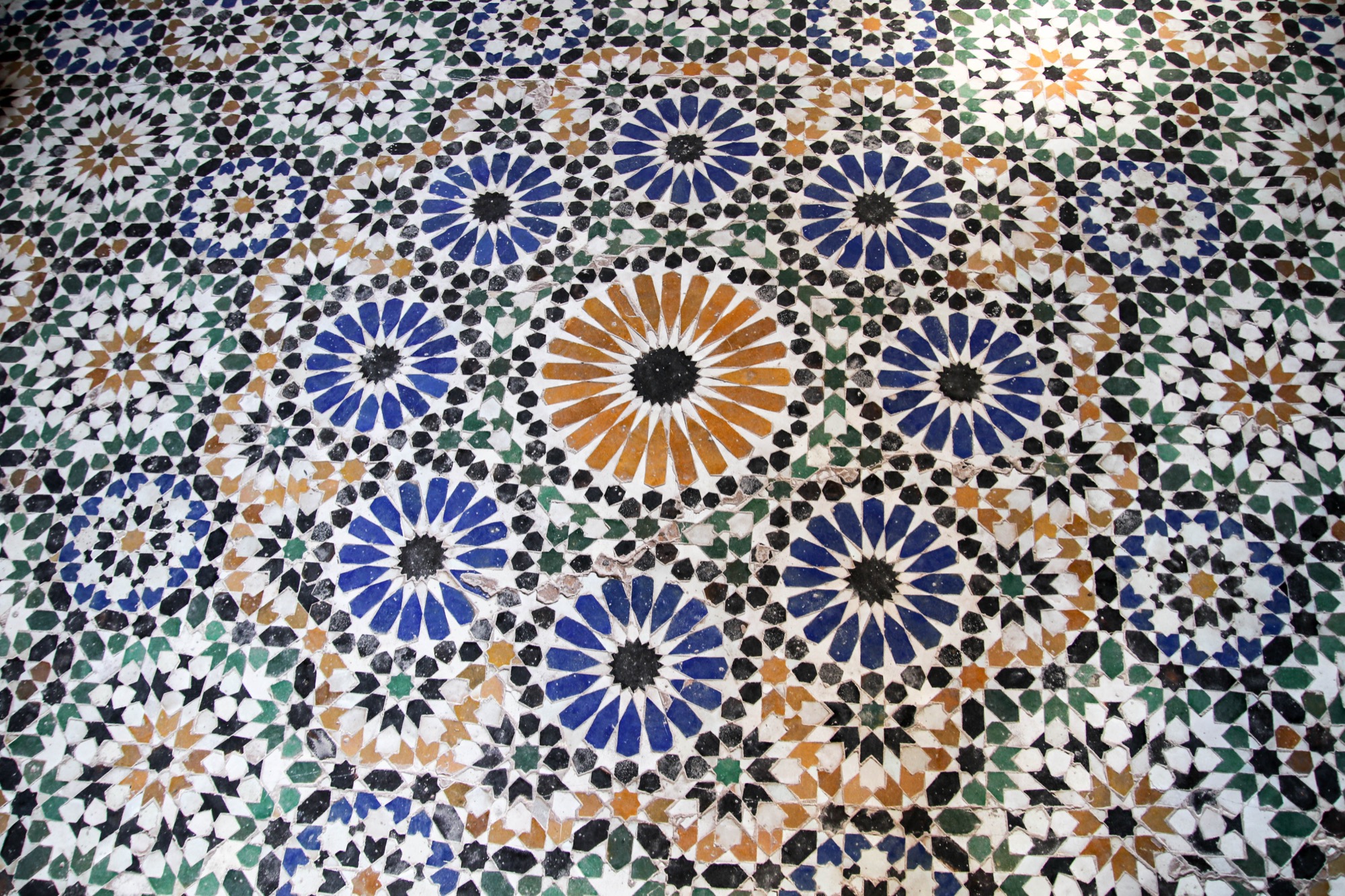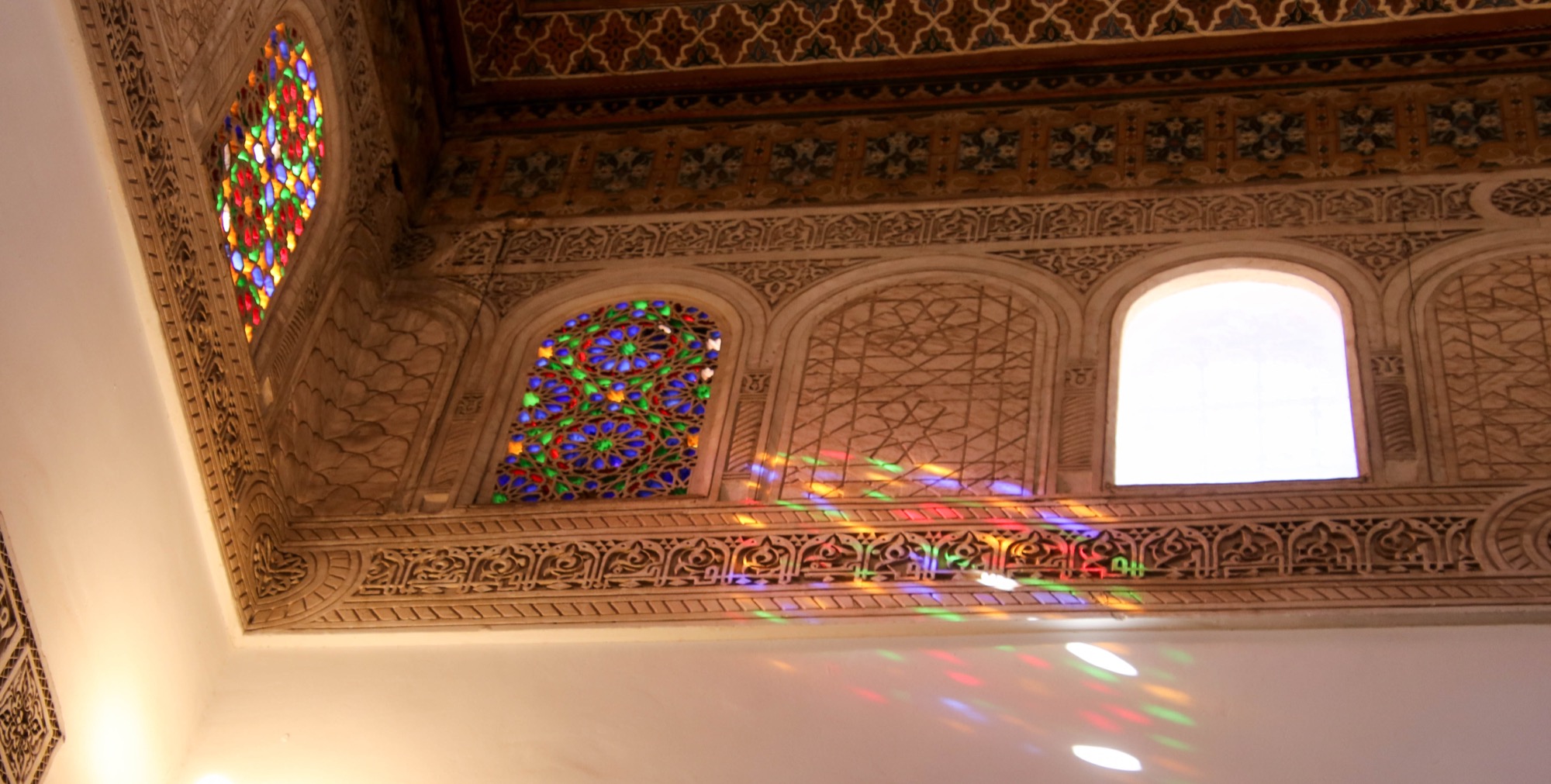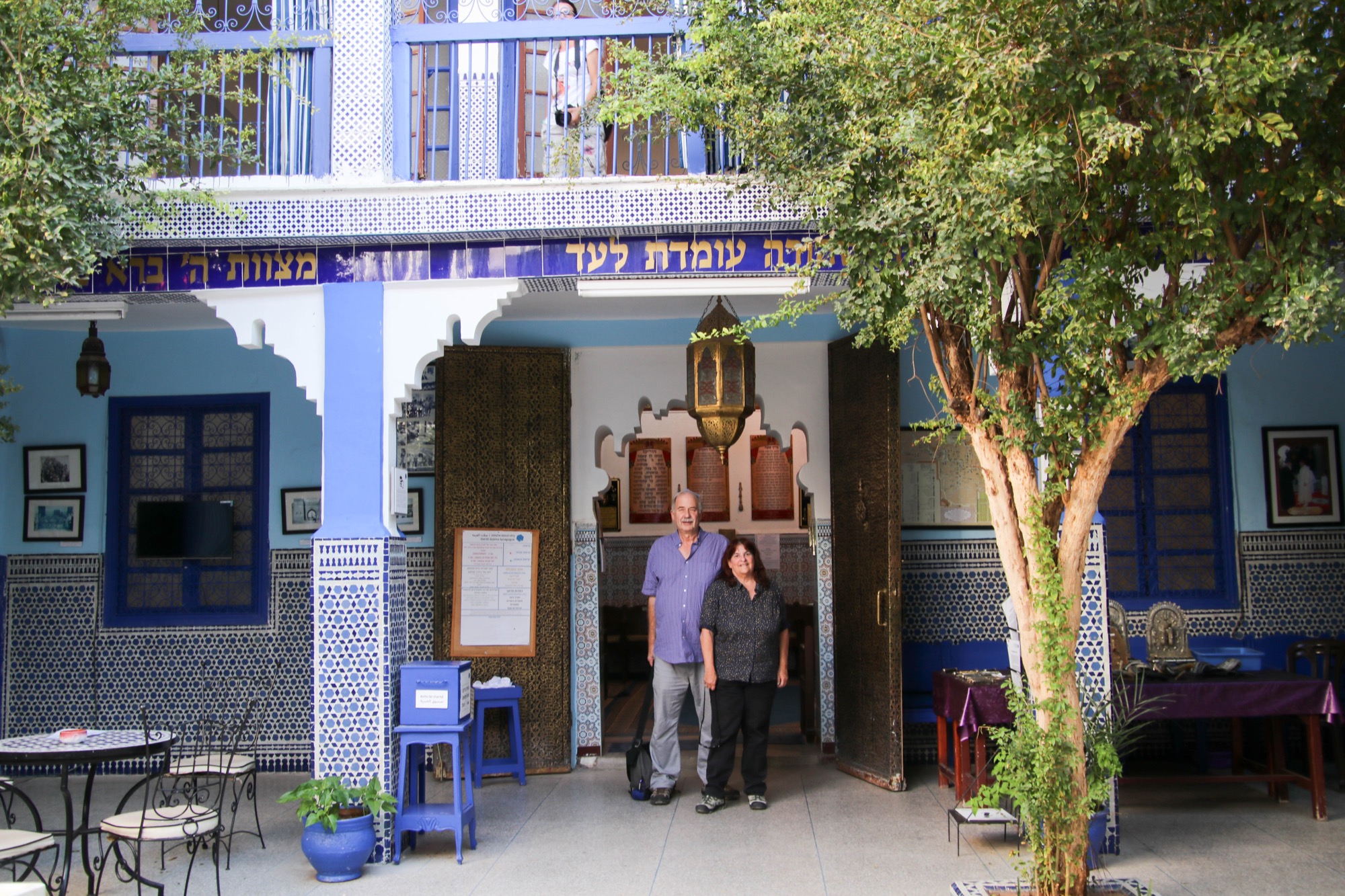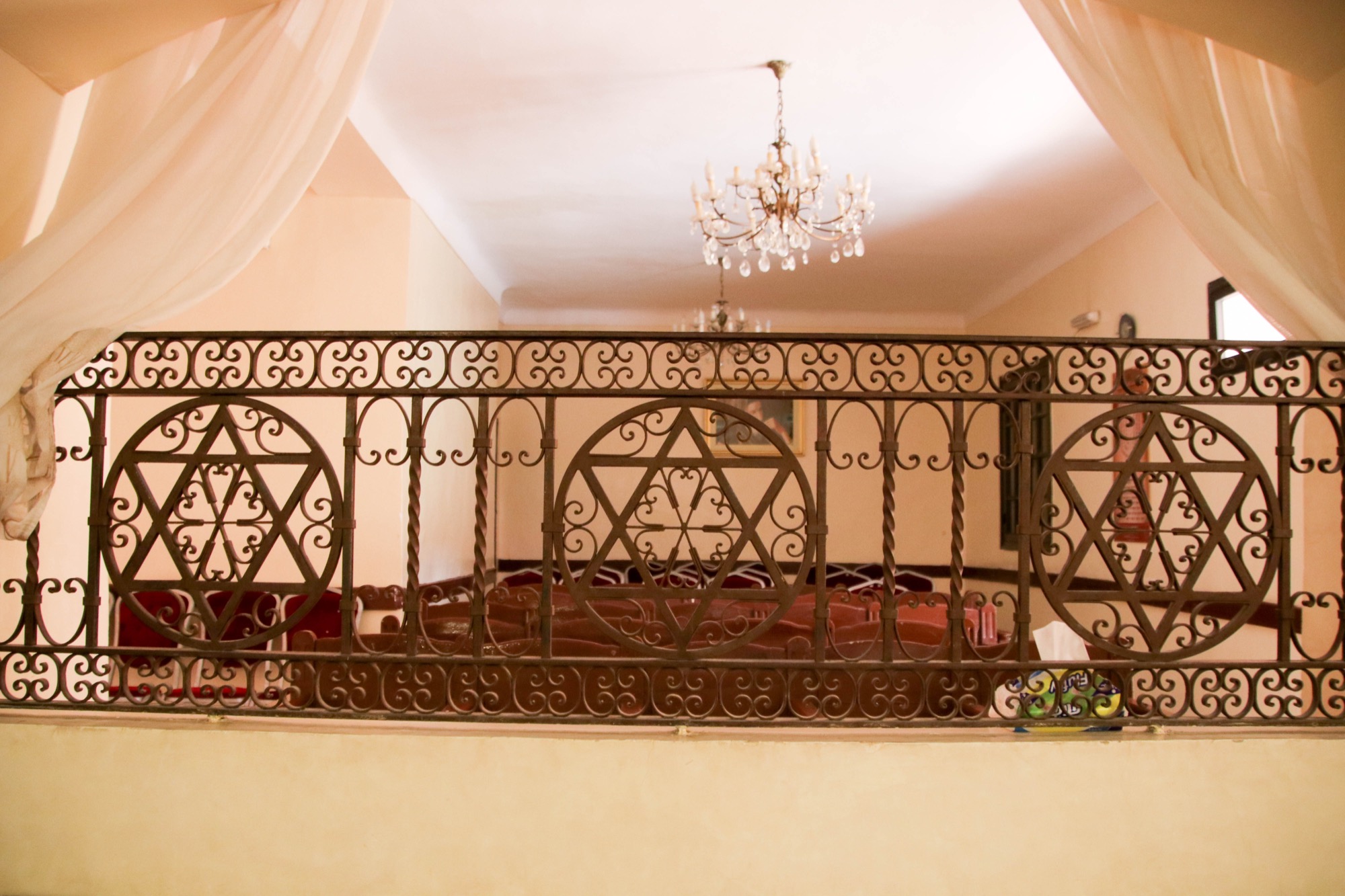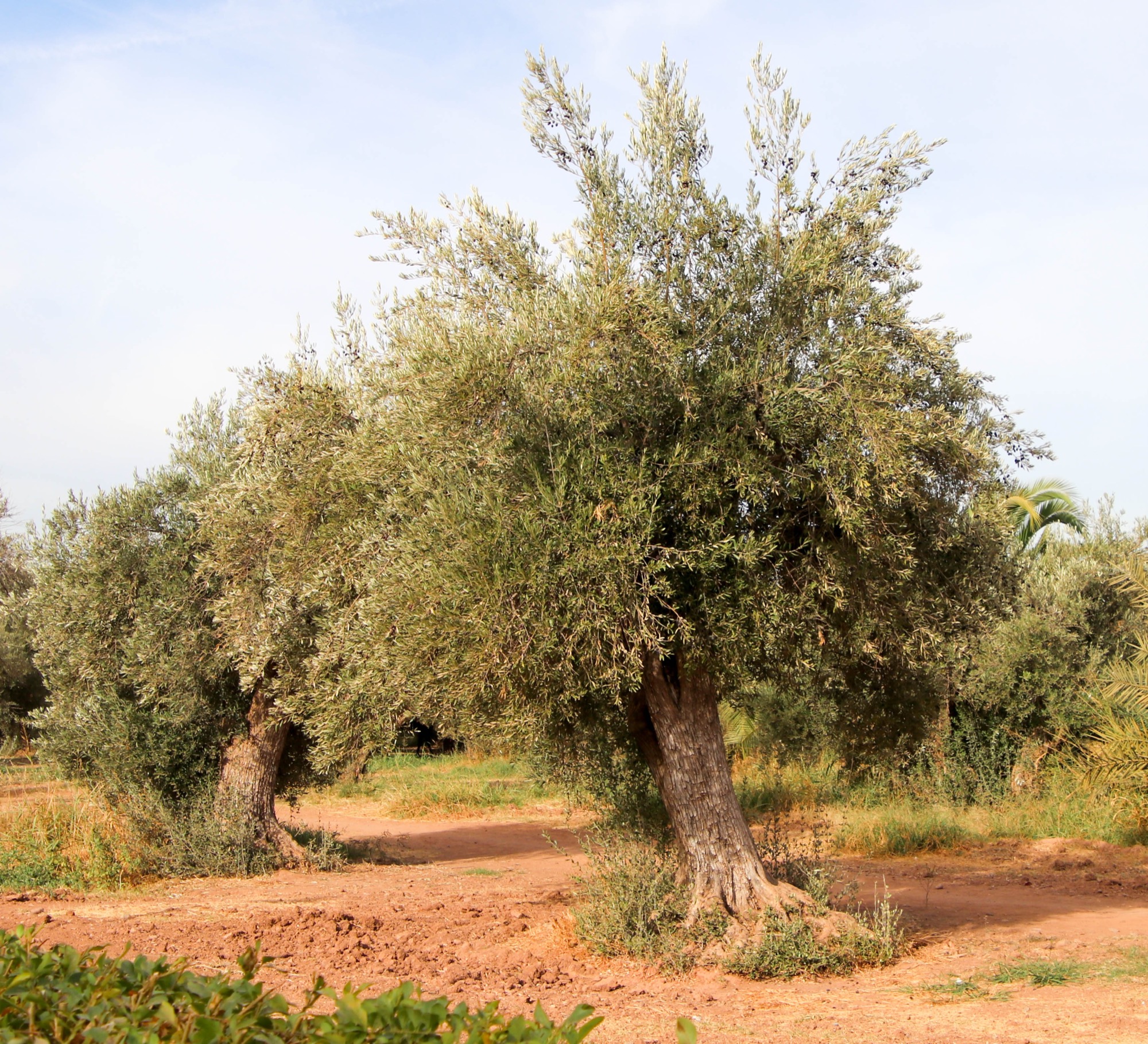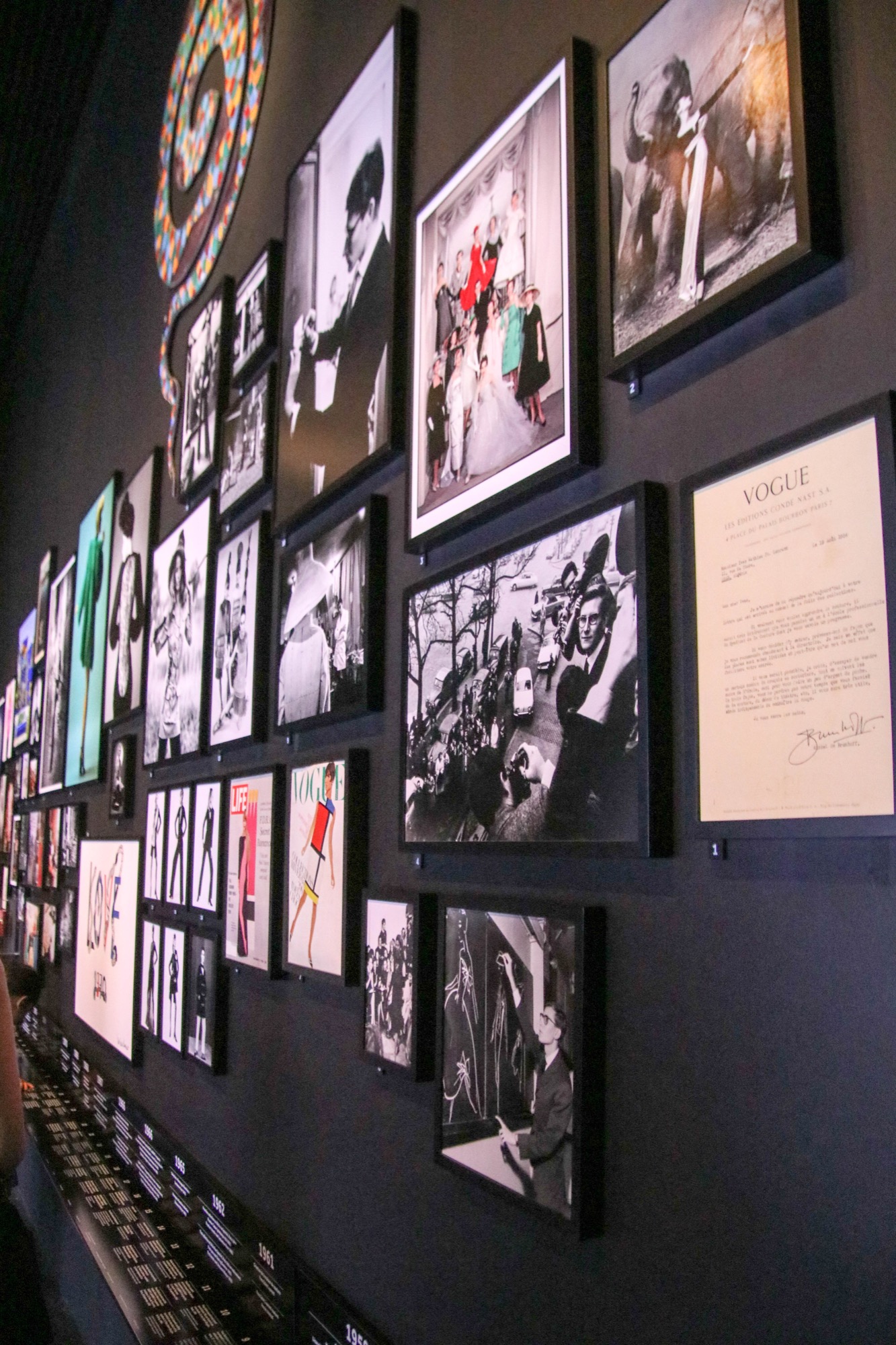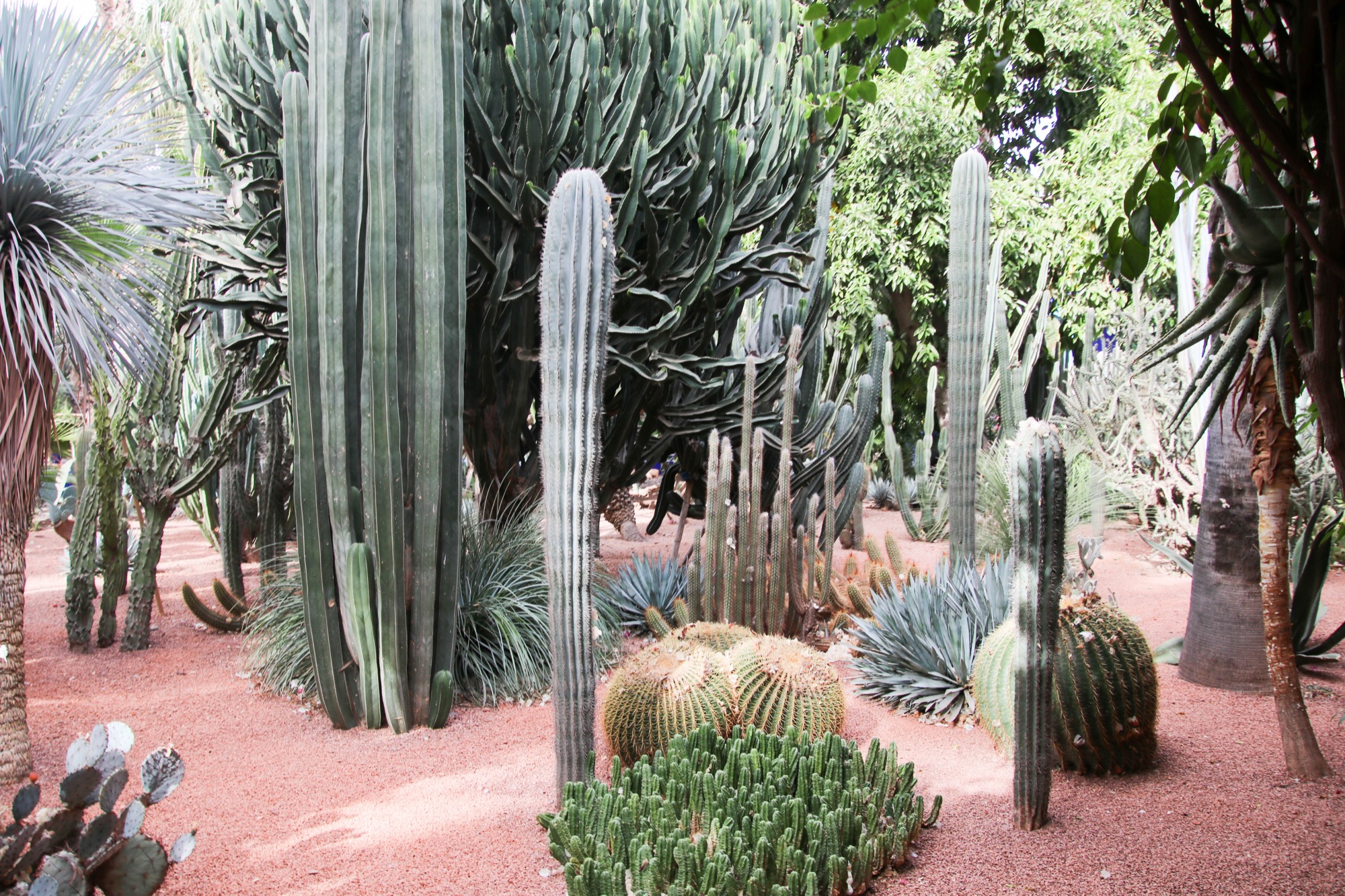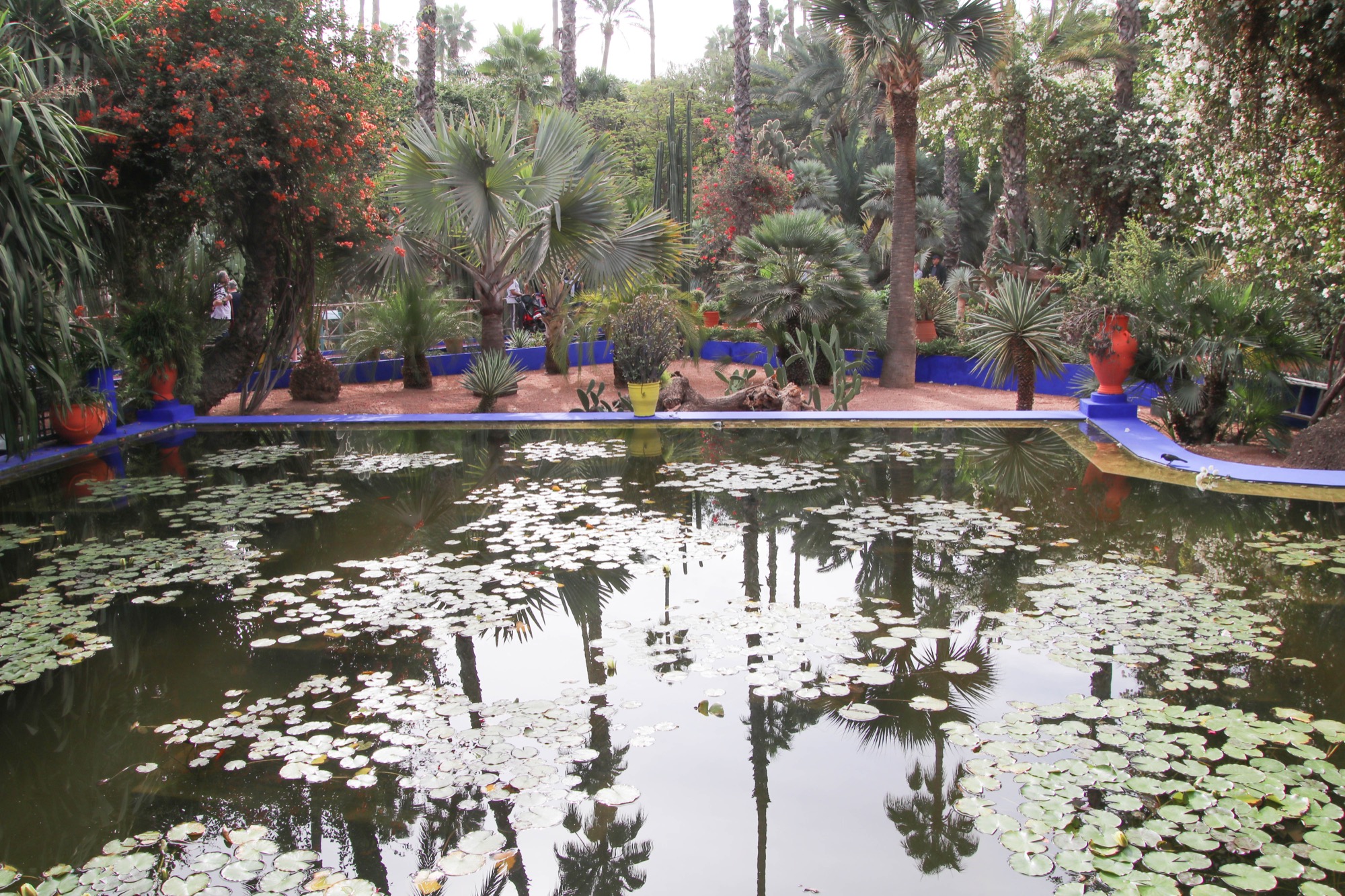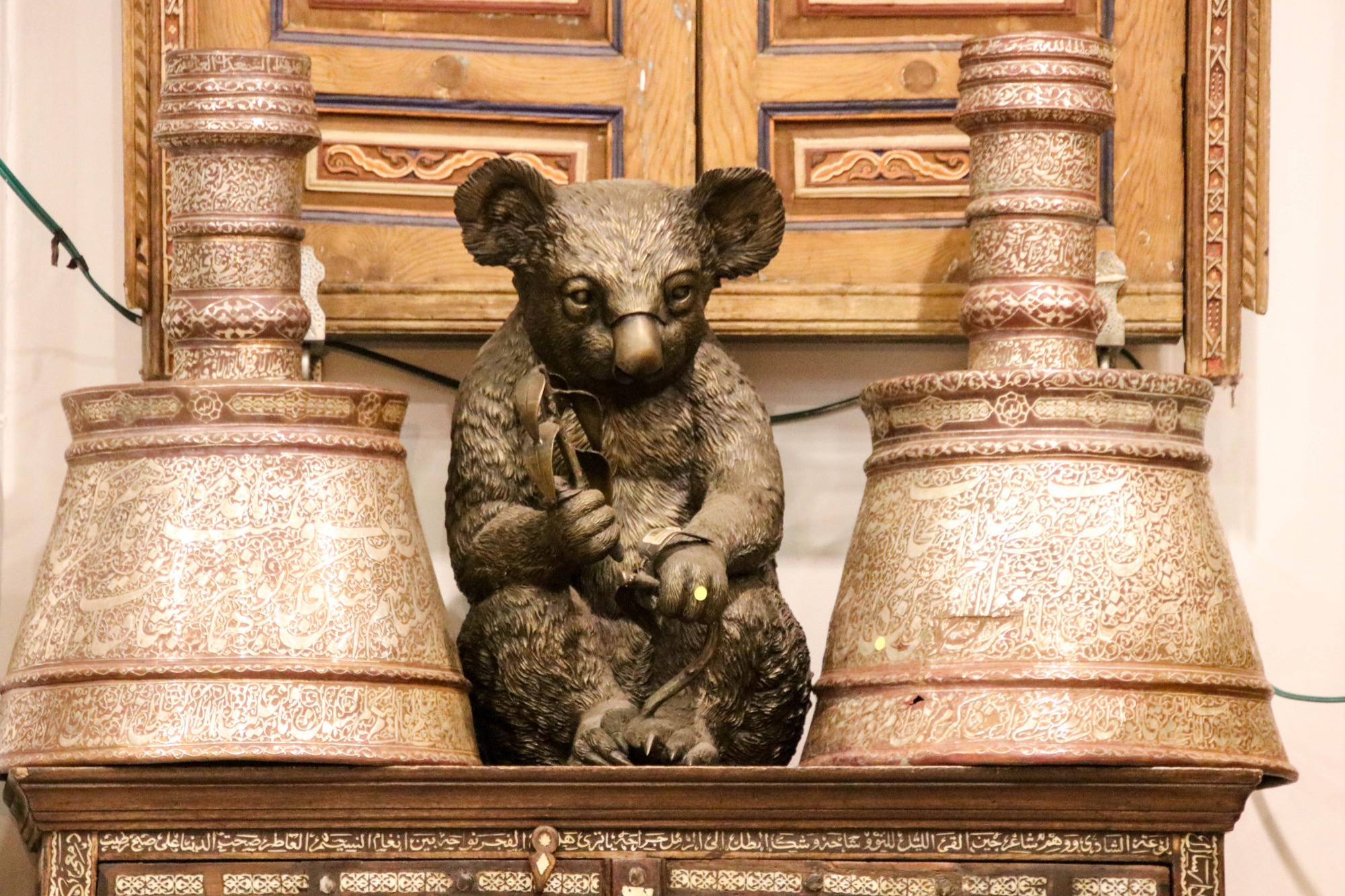Carved plaster is a traditional artform throughout Morocco. It begins with tadelakt plaster, which is a combination of lime plaster and black soap (made from olive oil) and is also waterproof. This plaster is applied to the wall or ceiling as a soft paste so it can easily be shaped. Once the plaster begins to set, elaborate designs are marked using stencils and then a craftsman will use a long narrow chisel to cut out the design. The plaster can then be colored by pouncing darker cement over the design. The last step is painting the outside face of the design.
Zellige tilework is another artform that is very prominent in Moroccan architecture. Elaborate geometric patterns used to ornament buildings, fountains and pools, and sometimes tables, are made by creating a pattern out of hand chiseled ceramic tile pieces and setting it in a plaster base.
The process begins with clay from Fez that has a high concentration of the mineral kaolinite. It is hand molded into squares that are sun dried and then baked in a kiln. The squares are then hand painted and baked a second time.
Master craftsmen then use special tools to shape and chip different geometric shapes from the squares. These small pieces are then laid out to create the bigger design.





